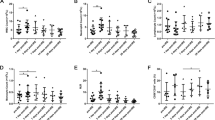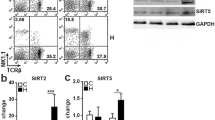Summary
By using semi-quantitative RT-PCR method, it was found that PD-L1 mRNA but not PD-L2 mRNA was expressed in H22 hepatoma cells and both PD-L1 and PD-L2 mRNAs were expressed in tumor tissues of tumor-bearing mice and upregulated as compared with muscle tissues in normal mice and H22 hepatoma cells. PD-L1 and PD-L2 were also expressed on the surface of the activated T cells. The soluble recombinant sPD-1 expressed from the constructed eukaryotic expression vector could enhance the lysis of tumor cells by lymphocytes stimulated specifically with antigen. The expression of sPD-1 by local gene therapy on the inoculation site of H22 hepatoma cells could inhibit the growth of tumor. The results of this study indicate that expression of soluble receptor of negative costimulatory molecules could reduce the inhibitory effect on T cells in tumor microenvironment and enhance the cytotoxicity of T cells on tumor cells. This possibly provides a new method of improving efficacy of tumor gene therapy.
Similar content being viewed by others
References
Freeman G J, Long A J, Iwai Yet al. Engagement of the PD-1 immunoinhibitory receptor by a novel B7 family member leads to negative regulation of lymphocyte activation. J Exp Med, 2000, 192:1027
Latchman Y, Wood C R, Chernova Tet al. PD-L2 is a second ligand for PD-1 and inhibits T cell activation. Nat Immunol, 2001, 2:261
Dong H, Strome S E, Salomao D Ret al. Tumor-associated B7-H1 promotes T-cell apoptosis: a potential mechanism of immune evasion. Nat Med, 2002, 8:793
Wai Y, Ishida M, Tanaka Yet al. Involvement of PD-L1 on tumor cells in the escape from host immune system and tumor immunotherapy by PD-L1 blockade. Proc Natl Acad Sci USA, 2002, 99:12293
Feng Z H, Huang B, Zhang G Met al. Investigation on the effect of peptides mixture from tumor cells inducing anti-tumor specific immune response. Science China (Series C, Chinese), 2002, 45:361
Mourich D V, Munks M W, Murphy J Cet al. Spermine compaction is an efficient and economical method of producing vaccination-grade DNA. J Immunol Methods, 2003, 274:257
Greenwald R J, Latchman Y E, Sharpe A H. Negative co-receptors on lymphocytes. Curr Opin Immunol, 2002, 14:391
Strome S E, Dong H, Tamura Het al. B7-H1 blockade augments adoptive T-cell immunotherapy for squamous cell carcinoma. Cancer Res, 2003, 63:6501
Wintterle S, Schreiner B, Mitsdoerffer Met al. Expression of the B7-related molecule B7-H1 by glioma cells: a potential mechanism of immune paralysis. Cancer Res, 2003, 63:7462
Curiel T J, Wei S, Dong Het al. Blockade of B7-H1 improves myeloid dendritic cell-mediated antitumor immunity. Nat Med, 2003, 9:562
Author information
Authors and Affiliations
Corresponding author
Additional information
Yuan Ye, female, born in 1969, M. D., Ph. D.
This work was supported by a grant from National Development Program (973) for Key Basic Research (2002CB513100).
Rights and permissions
About this article
Cite this article
Ye, Y., Yufei, H., Xiaohong, W. et al. Investigation on the effects of soluble programmed death-1 (sPD-1) enhancing anti-tumor immune response. Current Medical Science 24, 531–534 (2004). https://doi.org/10.1007/BF02911345
Received:
Published:
Issue Date:
DOI: https://doi.org/10.1007/BF02911345




